The phonograph is the oldest music player that made sound recording and playback possible, back in 1877, and I still can’t believe how Thomas Edison figured it all out.
These are standalone units that don’t need amplifiers and speakers, and they don’t even need electricity to operate.
Sounds interesting. Right?
And, I also know you have many questions in your mind, such as What sort of mechanisms these units have, How is music recorded without a microphone, and How does it output sound without amplifiers and speakers?
Out of all these, the most frequently asked question is: How is music generated from a wavy pattern on phonograph records?
Don’t worry. I will explain everything to you in the simplest way.
There is one important thing that I have noticed: many people call a phonograph a record player because a phonograph plays records, known as wax cylinders.
But a phonograph is not related to modern-day record players. There are many differences that I have shared in this article: Phonograph vs record players.
However, the phonograph is a sound recording and playback device created by Edison. In this article, I will provide in-depth information about phonographs, wax cylinders, and the working concept of phonographs (old mechanical players) developed by Thomas Edison, not modern-day record players.
Let’s get started with our first question.
What is a Phonograph?
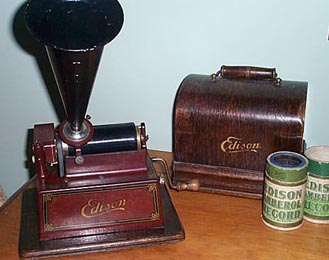
A phonograph is the first sound recording and playback device, invented by Thomas Edison in 1877, which operates purely on mechanical energy.
Before 1877, sound recording and listening to recorded sound were just a concept, or we can say a dream. But Edison made it possible and shook the whole music industry.
As we all know, the first-ever invention is never perfect and has room for improvement. Similarly, a phonograph also had room for improvement.
Therefore, an improved version of the phonograph, the gramophone, was introduced by Emile Berliner in the 1890s. Similarly, modern-day record players and turntables are better versions of the gramophone. You can learn more about the device here: What is a phonograph?.
I also recommend reading the following articles:
Now, let’s proceed forward and understand its playback medium.
What is a Phonograph record?
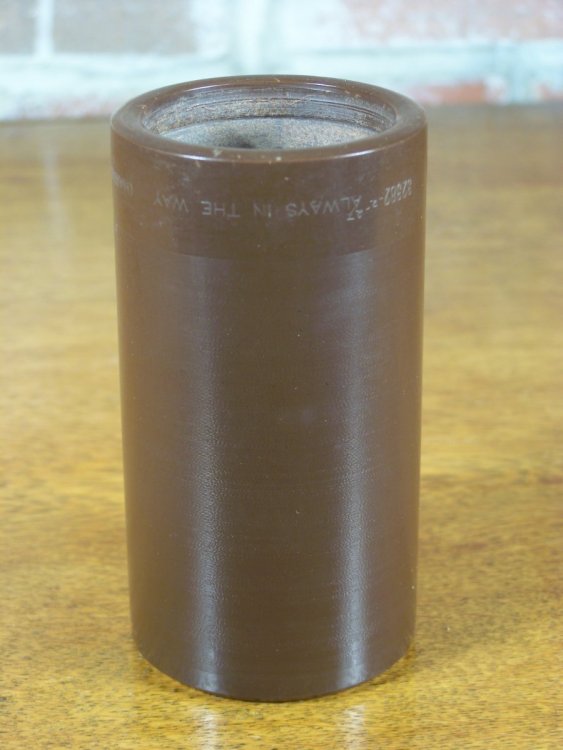
A phonograph record, also known as a wax cylinder, is the recording and playback medium used on a phonograph.
As the phonograph was the first-ever sound recording and playback device, there was room for improvement in the device itself and its recording or playback medium.
Thus, you will find many different types of phonograph records, such as brown wax, black wax, gold-moulded black wax, metallic soap black wax, celluloid cylinders, etc.
Out of all these, the blue Amberol cylinders were the most advanced cylinders that they had introduced. They are unbreakable and sound superior to other cylinders. This was the reason Edison’s company continued to manufacture these records until the company’s demise.
This is a brief description of the phonograph and its records.
Now, let’s talk about important components of the Phonograph (the oldest record player) that you must know to understand its working concept.
Parts of a Phonograph:
Horn
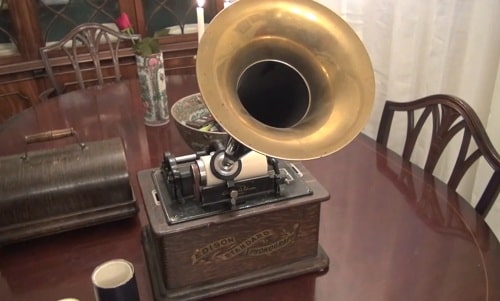
The horn has two different roles.
In recording sessions, it helps us to engrave sound waves on a wax cylinder. In playback mode, it amplifies the sound generated by the playback stylus from record grooves.
In simple terms, while recording, the horn acts as a mic, and while sound is being played back, it acts as a speaker.
Stylus
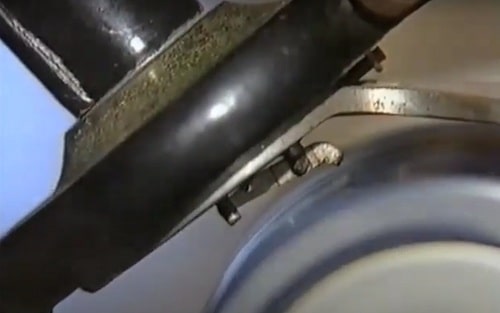
The phonograph came with a sapphire stylus that reads or engraves the grooves on the wax cylinders. The stylus is connected to the diaphragm with a thin wire and hangs freely.
For adding weight (tracking force) to either engrave grooves or fetch audio information from existing grooves, a reproducer weight is used. Here, a reproducer weight works as a medium to add tracking force.
There are two types of styluses:
Cutting stylus:
A cutting stylus cuts/engraves the incoming sound waves from the horn through the diaphragm on the record.
Playback stylus:
A playback stylus reads the cylinder’s grooves and transmits the fetched audio signals to the horn through the diaphragm.
Difference between cutting and playback stylus:
The only difference between the styluses is the weight added by the reproducer weight.
In a cutting stylus, the reproducer weight is heavier, which directly adds more weight to the stylus and helps it to cut through the wax and engrave the grooves. In the playback stylus, the reproducer weight is comparatively lighter, so the stylus is just able to read the grooves, and not cut through the wax.
Diaphragm
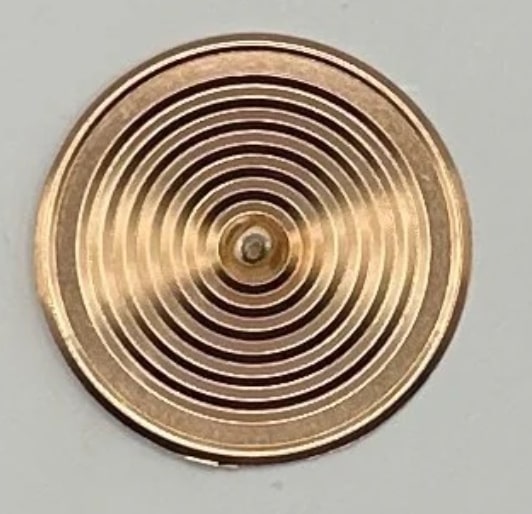
The diaphragm is responsible for converting vibrations into sound waves.
Just like the horn, the diaphragm also has two different roles.
While using a cutting stylus, the diaphragm converts the sound waves coming through the horn into vibrations. These vibrations are further transferred to the stylus, and grooves are engraved on cylinders.
And when a playback stylus is used, the same diaphragm converts the vibrations generated from grooves by the stylus into sound waves, which are further amplified by the horn.
Placement of the diaphragm in a phonograph:
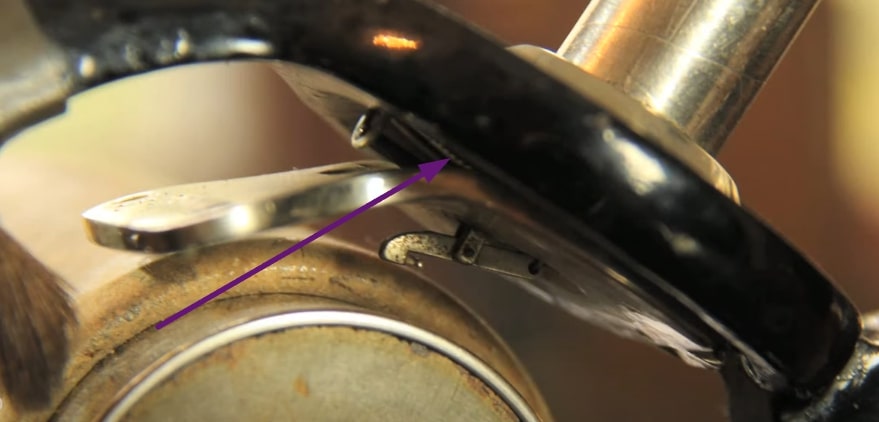
The placement of the diaphragm is at the end of the horn and right above the stylus inside the reproducer.
Reproducer
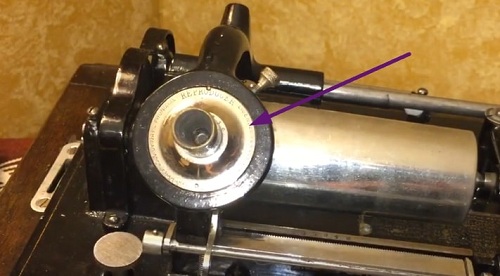
A reproducer is a component that holds the diaphragm inside its metal case, along with the stylus and the reproducer weight at one end. The other end can be connected to the horn directly or using an arm.
Reproducer weight
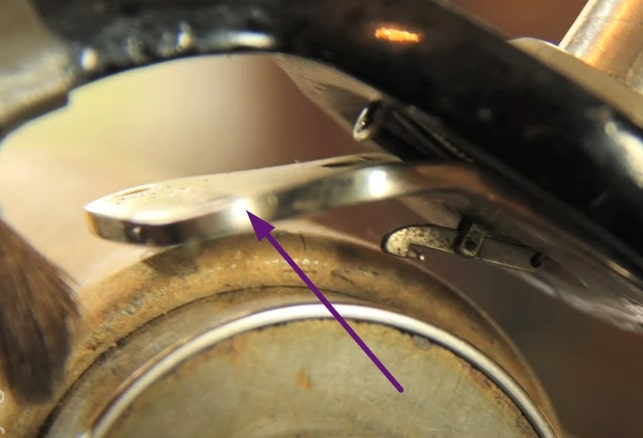
The reproducer weight is responsible for adding weight, known as tracking force, to the stylus. The recording or playback mode depends on the reproducer weight. The weight either cuts off the grooves or fetches audio information from existing grooves.
Mandrel
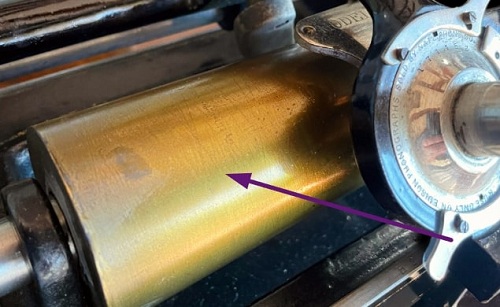
The mandrel is the cylindrical base where we place our wax cylinders. Its role is similar to a modern-day record player’s plinth.
Feed gear
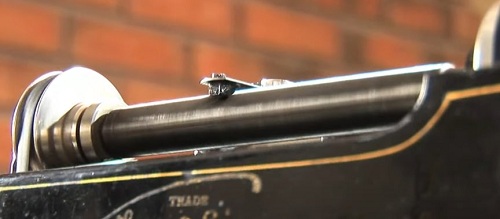
The feed gear is responsible for rotating the wax cylinders. One end of the feed gear is connected to the phonograph’s mechanism through a rubber belt, whereas the other end is connected to the Mandrel. The base rotates at 160 RPM, which further rotates our wax cylinder at the same speed.
Mechanism (How it works without electricity)
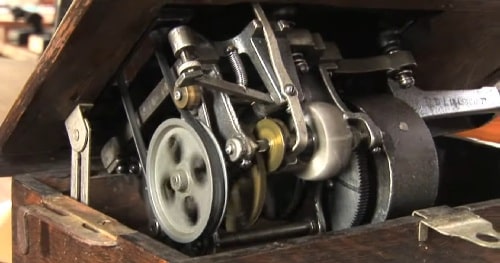
A phonograph works purely on mechanical energy. It uses spring-driven and pulley-driven technology.
From the image, the mechanism appears to be very complex.
Here is my best attempt to explain the mechanism in simple words.
A spring located inside a metal case is wound up using a hand-crank. The spring is further connected to a governor.
The spring rotates the governor, which further rotates many bearings. The last bearing is connected to the feed dogs with a rubber belt. The spinning bearing rotates the feed dogs, and as a result, our wax cylinder starts spinning.
All old record players work the same way, including the gramophone.
From my perspective, this is the simplest explanation of the working concept of the phonograph that you could ever find on the internet.
Start/Stop button
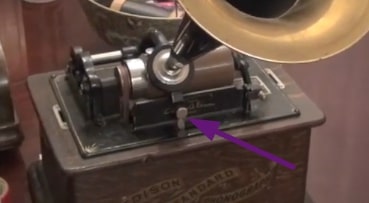
The small metal piece coming out from the phonograph’s box is the start/stop button. Shift the metal piece to the left, and your record will begin to spin. Similarly, shift the metal piece to the right and record stops spinning.
Now, let’s understand the working concept of a phonograph.
How does a Phonograph work?
For better understanding, we will go through the recording and playback process separately. First, we will discuss the recording concept, and after that, we will discuss the playback concept.
This beginner-friendly guide will also guide you on how to use a phonograph.
So, let’s get started.
How music is recorded (Sound recording):
Here, we will set up our phonograph for sound recording.
Place the new wax cylinder:
Get a new brown wax cylinder or shave off the existing grooves and make space for the new grooves. Add it to the mandrel.
Add a reproducer with a cutting stylus and attach the horn
Add a reproducer with a cutting stylus, and attach the horn to the other end of the reproducer.
Why use a cutting stylus?
A cutting stylus has additional weight added to it by the reproducer weight, which helps us to cut through the wax and engrave sound waves on the record.
Move the reproducer to the start (Left side)
Pick up the reproducer and horn assembly and move it to the start of the cylinder. The reproducer moves from left to right.
One important note: a reproducer, reproducer weight, diaphragm, and stylus all work as a phono cartridge in modern turntables.
Start the unit
No electricity needed.
Just wind up the spring using a hand crank and shift the start/stop button to the left. Your wax cylinder will begin to spin.
Start recording
Stand right in front of the horn and once the record begins to spin, start speaking, playing an instrument, or do whatever you want to record.
As you speak, you will see the stylus start cutting through wax, and shaved-off wax will start building up near the stylus. You need to keep blowing it off to prevent your grooves.
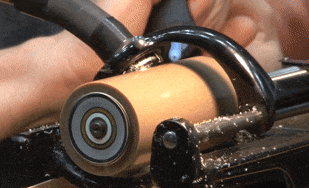
Here is an image of a live recording session in which a song with multiple instruments is being recorded on a phonograph record.
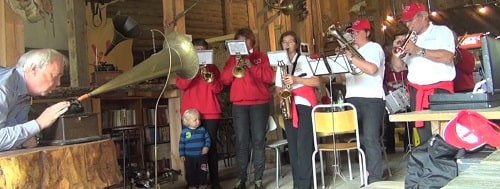
Let’s talk about the recording process in detail and learn how a phonograph record works and sounds.
The concept of recording involves engraving sound waves onto a record.
When an artist sings a song in front of a horn, the sound waves generated by the artist’s voice and background instruments travel through the horn to reach the reproducer.
The reproducer features a diaphragm inside that vibrates in response to the intensity of the sound wave, and the stylus, which hangs freely in the air while being connected to the diaphragm via a fine wire.
The stylus catches the vibrations transferred through a tiny wire by the diaphragm and starts to vibrate. The vibrating stylus with the added weight of the reproducer weight starts peeling off the wax from the cylinder.
The stylus moves in a similar way to sound waves. Thus, we have the exact representation of sound waves generated by the artist’s voice and background instruments on the grooves.
The grooves engraving concept is similar to vinyl records, gramophone discs, and shellac records. To learn more in-depth about what sound waves are, how they are generated, and how music is recorded on records, I recommend reading this article: How music is recorded on vinyl records.
That’s it. The recording process is done. Now, stop the unit, remove the cylinder from the mandrel, and clean it by removing the excess wax.
That’s it. You are now ready to listen to the recorded sound.
How does a phonograph produce sound?
Here, we will set up our phonograph to read the engraved sound waves or data from the record and listen to them.
Place the wax cylinder with audio information
Place the wax cylinder with recorded sound on the mandrel.
Add a reproducer with a playback stylus and attach the horn
Add a reproducer with a playback stylus, and attach the horn to the other end of the reproducer.
Why use a playback stylus?
A playback stylus has comparatively less weight added to it by the reproducer weight, which restricts the stylus from cutting through the wax, allowing it to fetch the audio information from physical sound waves, known as grooves.
Move the reproducer to the start (Left side)
Pick up the reproducer and horn assembly and move it to the start of the cylinder. The reproducer moves from left to right.
Start the unit
Just wind up the spring using a hand crank and shift the start/stop button to the left. Your wax cylinder will begin to spin.
Listen to the recorded sound
Here, the phonograph does the opposite of what it does while recording sound.
The playback stylus moves along with the grooves (without cutting off wax) and vibrates.
In simple words, the stylus moves in the same direction as the grooves are being engraved. So, the stylus vibrates, representing similar sound waves when the original sound is recorded.
These vibrations are transferred to the diaphragm through the tiny wire, and the diaphragm converts these vibrations into sound waves.
These sound waves pass through the horn while being amplified by the horn itself, and we start listening to the audio we have recorded.
The concept of fetching audio information from grooves is similar to vinyl records, gramophone discs, and shellac records. To learn more in-depth about how music is created from physical grooves and how they are amplified, I recommend reading this article: How music is played from vinyl records.
That’s it.
Video of music recording and playback through a Phonograph:
This is probably the simplest explanation of how a phonograph and phonograph records work, with examples and images. If you still have queries, feel free to comment below. We will get back to you as soon as possible.


